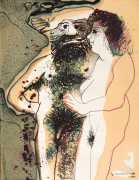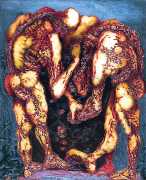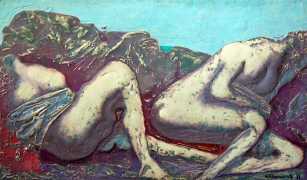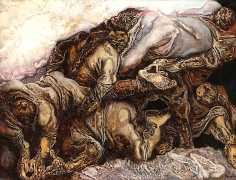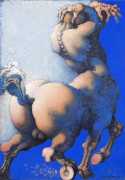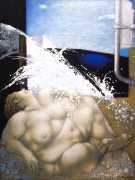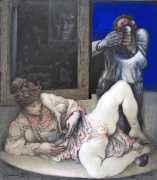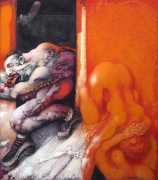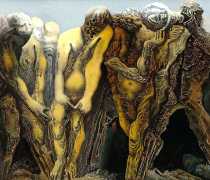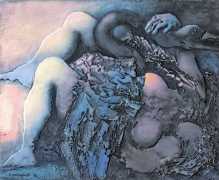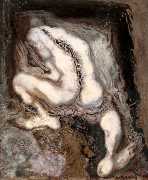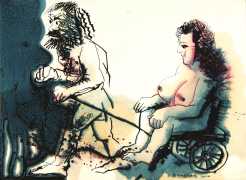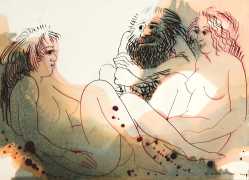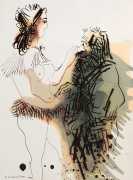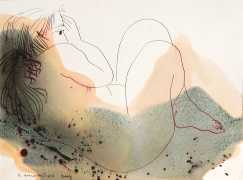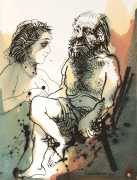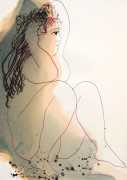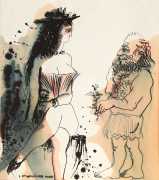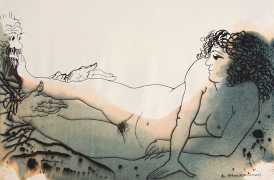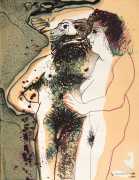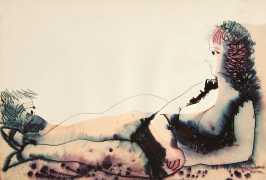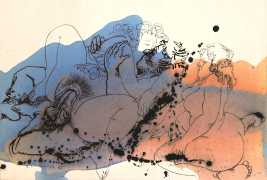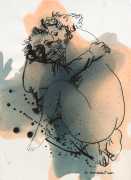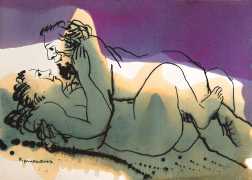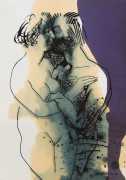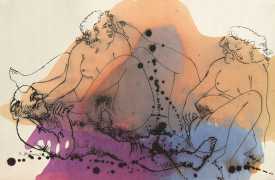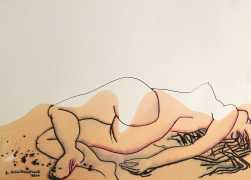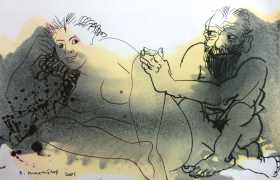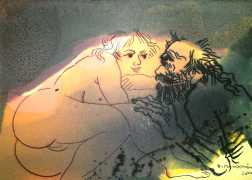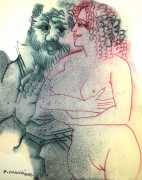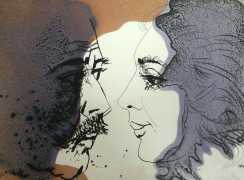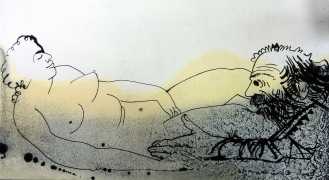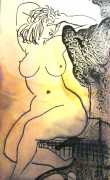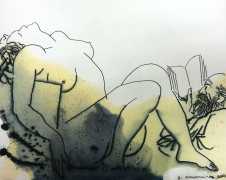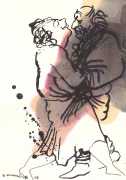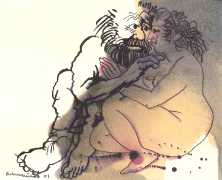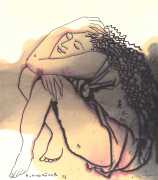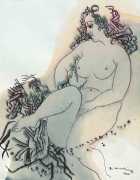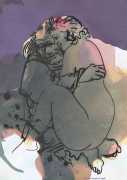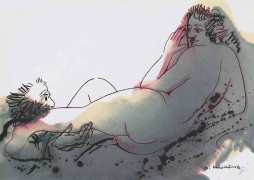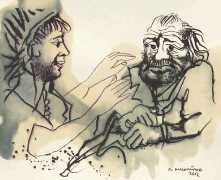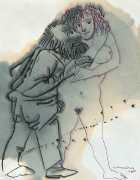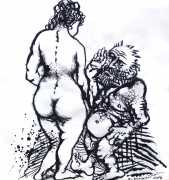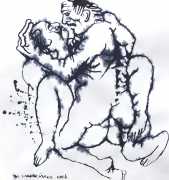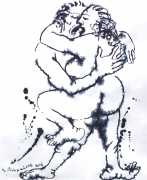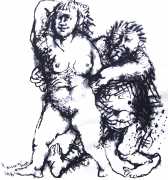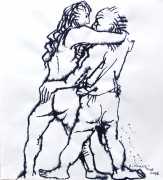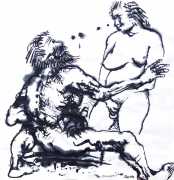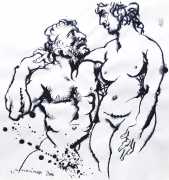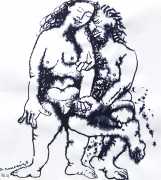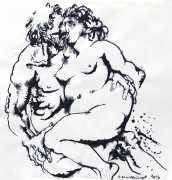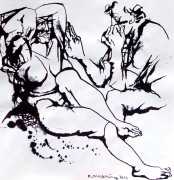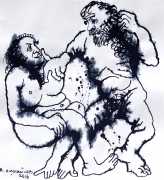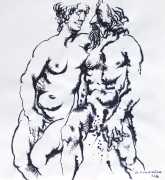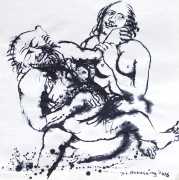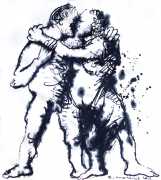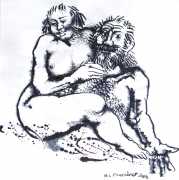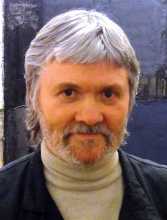 The Russian artist Vyacheslav Mikhailov grew up in Arzgir, east of Stavropol in the south of the country. After serving in the army, he studied at the Repin Institute of Painting, Sculpture and Architecture in St Petersburg (then Leningrad), where he studied under Yevsey Moisejenko. After completing his post-graduate studies in 1979, Mikhailov, together with Valery Lukka and Felix Volosenkov, created a group dedicated to new forms of artistic expression beyond the dominant social realism; they were dubbed by art critics The Three Bogatyrs, after the traditional Russian folk heroes whose duty was to protect against invaders.
The Russian artist Vyacheslav Mikhailov grew up in Arzgir, east of Stavropol in the south of the country. After serving in the army, he studied at the Repin Institute of Painting, Sculpture and Architecture in St Petersburg (then Leningrad), where he studied under Yevsey Moisejenko. After completing his post-graduate studies in 1979, Mikhailov, together with Valery Lukka and Felix Volosenkov, created a group dedicated to new forms of artistic expression beyond the dominant social realism; they were dubbed by art critics The Three Bogatyrs, after the traditional Russian folk heroes whose duty was to protect against invaders.
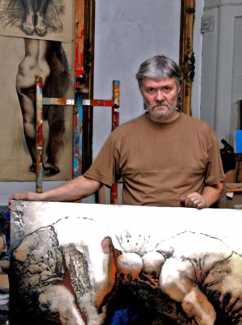 In his bold, colourful paintings, Mikhailov adapted the technique of ‘levkas’, used in Russian icon painting, to create relief and texture. Levkas is a mixture of fine alabaster powder and gypsum in glue, similar to gesso, applied in layers to a surface prior to painting; its bright whiteness (the word derives from the Greek leukos, white) allows the colours of the paint to appear their brightest, as well as allowing for the texturing which is a trademark of much of Mikhailov’s work. He has developed a pictorial language of his own based on form and semantics, paintings which fascinate with their intricate surfaces and saturated colours.
In his bold, colourful paintings, Mikhailov adapted the technique of ‘levkas’, used in Russian icon painting, to create relief and texture. Levkas is a mixture of fine alabaster powder and gypsum in glue, similar to gesso, applied in layers to a surface prior to painting; its bright whiteness (the word derives from the Greek leukos, white) allows the colours of the paint to appear their brightest, as well as allowing for the texturing which is a trademark of much of Mikhailov’s work. He has developed a pictorial language of his own based on form and semantics, paintings which fascinate with their intricate surfaces and saturated colours.
As well as his paintings in levkas and oils, Mikhailov works with etching and ink and colour wash drawings, producing tender works of intimacy and relationship.
In the early 1980s Vyacheslav Mikhailov began to participate in exhibitions both in Russia and abroad. He had a solo exhibition at the Russian State Museum in 1995, and contributed to a group exhibition at the Hermitage Museum in 2004. He is a member of the Russian Association of Artists.
We would like to thank our Russian friend and contributor Yuri for introducing us to the work of this artist and supplying many of the images.

